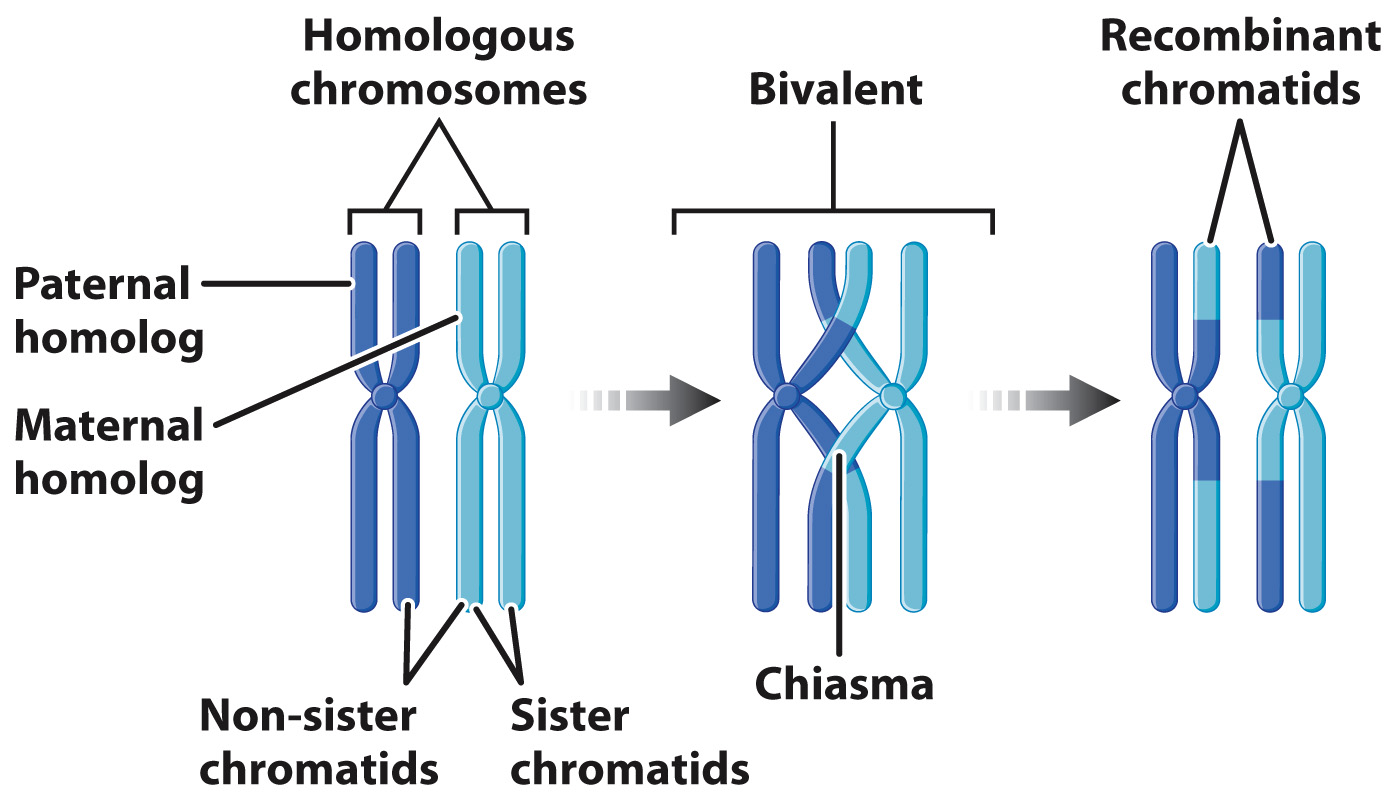Crossing over between DNA molecules results in exchange of genetic material.
Within the bivalents are cross-

Through the process of crossing over, homologous chromosomes of maternal origin and paternal origin exchange DNA segments. The positions of these exchanges along the chromosome are essentially random, and therefore each chromosome that emerges from meiosis is unique, containing some DNA segments from the maternal chromosome and others from the paternal chromosome. The process is very precise: Usually, no nucleotides are gained or lost as homologous chromosomes exchange material. Occasionally, the exchange is imprecise and portions of the chromatids may be gained or lost, resulting in loss or duplication of material. Note the results of crossing over as shown in Fig. 11.9: The recombinant chromatids are those that carry partly paternal and partly maternal segments. In this way, crossing over increases genetic diversity.
The number of chiasmata that are formed during meiosis depends on the species. In humans, the usual range is 50–